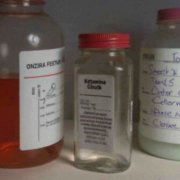Ketamine Liquid for Sale USA: Top 3 Must-Know Facts
Ketamine Liquid for Sale USA: Open uping Its Potential and Understanding Its Place
If you’re seeking ketamine liquid for sale USA, it’s crucial to understand both its potential uses and the legal framework surrounding it. Ketamine, originally approved by the FDA for use as a general anesthetic, has gained attention for its off-label applications in pain management and treatment-resistant depression. Its unique properties offer rapid relief, making it an appealing option for individuals seeking swift improvement when traditional therapies fall short.
Key Points on Ketamine Liquid:
- Approved initially as a general anesthetic by the FDA.
- Widely explored for off-label uses, such as depression and pain relief.
- Legal to purchase with a prescription, but restricted as a controlled substance in the USA.
Ketamine is available in various forms, including liquid, which can be administered intravenously, intramuscularly, or even orally. However, its availability is tightly controlled due to its classification as a Schedule III substance in the United States. This means that while it holds promise for therapeutic benefits, its purchase and use must be carefully managed under medical supervision to ensure safety and compliance with regulations.
Understanding ketamine’s uses, availability, and legality is crucial for anyone considering it as a treatment option or seeking to purchase it within the USA.

Understanding Ketamine Liquid
Ketamine is a unique medication with fascinating properties. Its pharmacology involves acting primarily as an N-methyl-D-aspartate (NMDA) receptor antagonist. This means it blocks certain receptors in the brain, leading to its well-known dissociative and anesthetic effects. Unlike many anesthetics, ketamine doesn’t significantly depress the respiratory system, which can make it safer in certain situations.
Pharmacokinetics of ketamine are equally intriguing. When administered, ketamine is rapidly absorbed and distributed throughout the body. It is metabolized in the liver, producing norketamine, an active metabolite that also contributes to its effects. This process is relatively fast, leading to ketamine’s quick onset of action. The drug is then excreted primarily via the kidneys.
There are several administration methods for ketamine liquid, each with its own benefits and drawbacks:
- Intravenous (IV): This method provides the fastest onset, usually within minutes. It’s often used in hospital settings for anesthesia or severe agitation. However, it requires professional administration and monitoring.
- Intramuscular (IM): IM administration is slightly slower than IV but still offers a rapid onset. It’s more practical in situations where IV access is difficult, such as in emergency settings or with uncooperative patients.
- Oral: Although less common due to its lower bioavailability, oral ketamine can be used for pain management or psychiatric conditions. It takes longer to take effect but may be more convenient for ongoing treatment.
Understanding these aspects of ketamine liquid helps in appreciating its potential and limitations. Whether considering its use for anesthesia, depression, or pain management, knowing how it works and how it is administered is key to using its benefits safely.
Ketamine Liquid for Sale in the USA
Availability of ketamine liquid in the USA is primarily through medical channels. It is a regulated product, often used in hospitals and clinics for its anesthetic and therapeutic properties. While ketamine has gained attention for its off-label uses, such as treating depression and chronic pain, its availability is tightly controlled to prevent misuse.
To purchase ketamine liquid, a prescription is typically required. This is because ketamine is classified as a Schedule III controlled substance in the USA. This classification indicates that while it has accepted medical uses, there is potential for abuse and dependency. Therefore, only licensed healthcare professionals can prescribe it, ensuring that its use is monitored and appropriate.
Legal considerations for ketamine are significant. The Food and Drug Administration (FDA) has approved it as an anesthetic, and its off-label uses are being explored in clinical settings. However, the sale and distribution of ketamine without a prescription are illegal. Unauthorized sale or possession can lead to severe legal consequences, emphasizing the importance of obtaining ketamine through legitimate medical channels.
For those exploring ketamine liquid for sale in the USA, it’s crucial to adhere to these regulations. Engaging with reputable sources and consulting healthcare professionals ensures safe and legal access to ketamine. This approach not only complies with the law but also prioritizes patient safety and well-being.
Uses and Benefits of Ketamine Liquid
Ketamine liquid is a versatile medication with several important uses in modern medicine. Its benefits span from anesthesia to treating depression and managing pain.
Anesthesia
Ketamine is widely used as an anesthetic in medical settings. It is especially valued for its ability to induce sedation without significantly depressing respiratory function. This makes it a preferred choice in emergency situations and for patients with compromised respiratory systems. Ketamine’s dissociative properties allow patients to remain conscious yet unaware of pain, making it ideal for certain surgical and diagnostic procedures.
Depression Treatment
In recent years, ketamine has emerged as a promising treatment for depression, particularly for those with treatment-resistant depression. Unlike traditional antidepressants, which can take weeks to show effects, ketamine often provides rapid relief. Clinical studies have shown that ketamine can alleviate depressive symptoms within hours, offering a new hope for patients who have not responded to other treatments. This quick action can be particularly beneficial in crisis situations, providing immediate relief and stabilizing mood.
Pain Management
Ketamine is also used for managing chronic pain, especially in patients who have not found relief with other medications. Its effectiveness lies in its ability to block N-methyl-D-aspartate (NMDA) receptors, which play a role in pain perception. This makes ketamine a valuable option for those suffering from neuropathic pain and complex regional pain syndrome. While it is not typically a first-line treatment, ketamine can be a powerful tool in a pain management strategy, particularly when other options have failed.
Overall, ketamine liquid offers significant benefits across various medical fields. Its unique properties make it a valuable asset for healthcare providers, enabling them to address challenging conditions with efficacy and speed. However, like any medication, its use requires careful monitoring to manage potential risks and side effects effectively.
Risks and Side Effects
While ketamine liquid offers substantial benefits, it’s crucial to be aware of the potential risks and side effects associated with its use. Understanding these can help ensure safe administration and minimize adverse outcomes.
Adverse Effects
Ketamine can affect multiple organ systems, leading to a range of side effects. Some of the more common or serious ones include:
- Cardiovascular: Increased blood pressure and heart rate, which can be dangerous for patients with preexisting hypertension.
- Central Nervous System: Prolonged emergence from anesthesia, dissociation, and in some cases, psychosis or drug dependence.
- Respiratory: Risks like laryngospasm and respiratory depression, though less common, require careful monitoring.
- Gastrointestinal: Nausea and vomiting are frequent, especially post-anesthesia.

Contraindications
Certain populations should avoid ketamine use due to heightened risks:
- Hypertensive Patients: Given ketamine’s impact on blood pressure, it’s contraindicated for those with uncontrolled hypertension.
- Patients with Schizophrenia: Ketamine can exacerbate symptoms of schizophrenia, making it unsuitable for such patients.
- Infants Under Three Months: The American College of Emergency Physicians advises against its use in very young children.
Monitoring Requirements
When using ketamine, monitoring is crucial to ensure patient safety and effectiveness:
- Vital Signs: Continuous monitoring of blood pressure and heart rate is essential during treatment.
- Liver Function: For patients on repeated doses, liver function tests should be done at baseline and every one to two days to prevent hepatobiliary dysfunction.
- Respiratory Function: Patients should be observed for any signs of respiratory distress, especially if they have preexisting respiratory issues.
By carefully managing these risks and monitoring patients closely, healthcare providers can leverage the benefits of ketamine liquid while minimizing potential side effects.
Frequently Asked Questions about Ketamine Liquid
What is ketamine used for?
Ketamine is a versatile medication with several important uses. It is primarily known for its role in anesthesia. As a general anesthetic, ketamine induces a trance-like state, providing pain relief, sedation, and amnesia. This makes it particularly useful in emergency settings and for patients who may not tolerate other anesthetics well.
Beyond anesthesia, ketamine has gained attention for its off-label use in treating depression, particularly treatment-resistant depression. Studies have shown that ketamine can rapidly reduce depressive symptoms, offering hope to patients who have not responded to traditional antidepressants.
Ketamine is also used for pain management. Its analgesic properties make it valuable for managing acute and chronic pain, especially in patients who need an alternative to opioids.
Is ketamine legal in the USA?
Yes, ketamine is legal in the USA, but it is classified as a controlled substance. This means it is regulated by the Drug Enforcement Administration (DEA) to prevent misuse and abuse. Ketamine is a Schedule III drug, indicating it has potential for abuse but also accepted medical uses.
To use ketamine legally, a prescription from a licensed healthcare provider is required. The regulations ensure that ketamine is administered safely and appropriately, under medical supervision.
How is ketamine administered?
Ketamine can be administered through various routes, each suited to different clinical needs:
- Intravenous (IV): This is the most common method in hospitals and clinics, providing rapid onset of effects. It is often used for anesthesia and acute pain management.
- Intramuscular (IM): This route is used when IV access is not feasible. It is effective for sedation and pain relief in urgent situations.
- Oral: While less common, oral ketamine is used in certain pain management and psychiatric settings. It has a longer onset time compared to IV or IM routes.
Understanding these administration methods helps ensure ketamine’s effective and safe use across various medical contexts.
Conclusion
At Buy Ketamine Crystals Online, we understand the importance of accessing high-quality ketamine products with ease and privacy. Our platform offers a range of ketamine forms, including crystals, powder, pills, and vials, all available for discreet delivery. Whether you’re in the USA, UK, Germany, Austria, or beyond, our service ensures your order arrives safely and confidentially.
Our unique selling proposition lies in offering ketamine without a prescription, making it accessible for various needs. We cater to both pharmaceutical and recreational markets, providing a reliable source for those seeking ketamine liquid for sale in the USA. Our commitment to quality and discretion sets us apart, ensuring customer satisfaction with every purchase.
For more information on our products and to explore our offerings, visit our liquid ketamine page. Experience the convenience and reliability of shopping with Buy Ketamine Crystals Online today.











